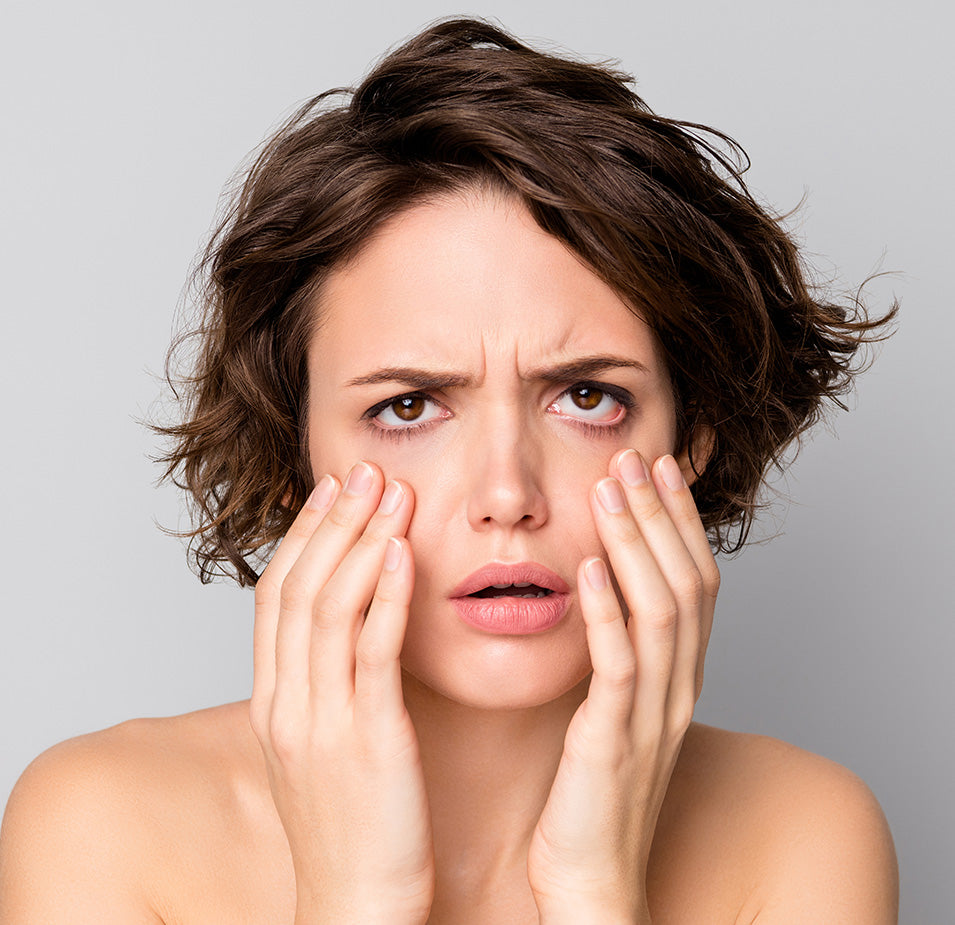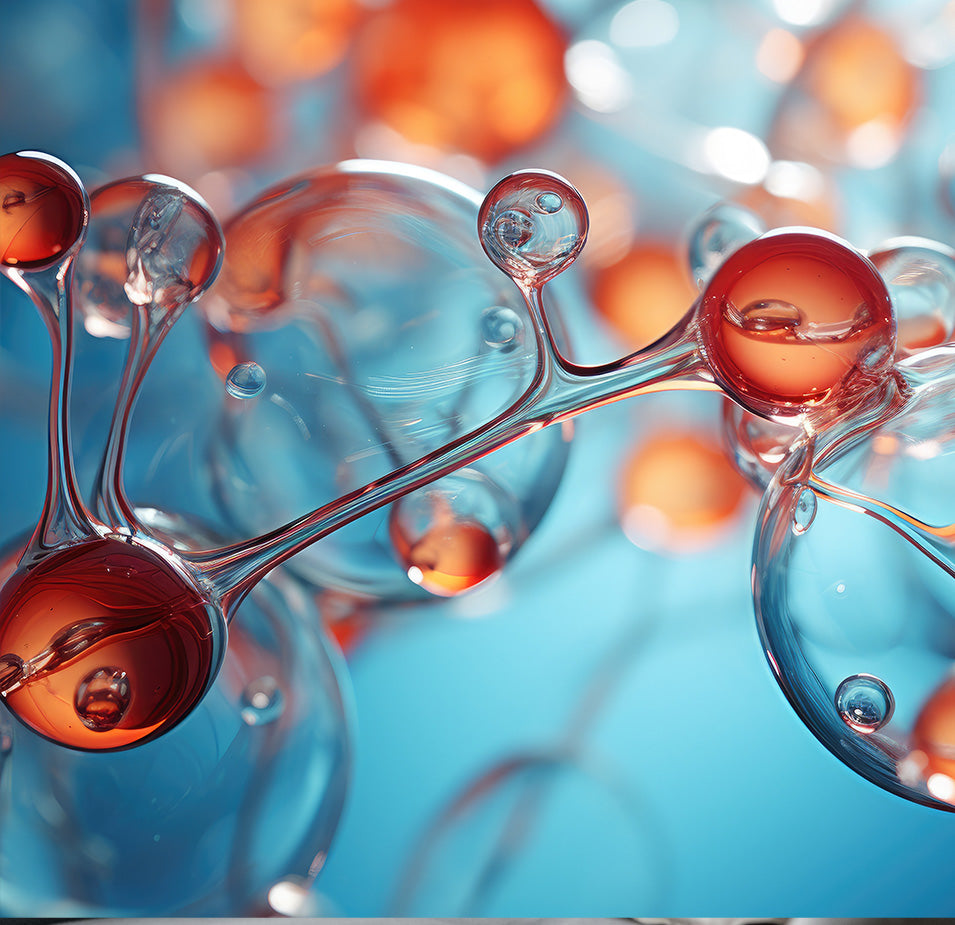
It’s a frustrating fact of reality: two people of the same age can take equally good care of their skin, yet one might appear to be an entire decade older than the other. Why do some people develop creased, sagging, dull skin while others seemingly hold onto the blessings of youth for ages?
The answer lies in genetics and ethnicity—and if you’re fair-skinned, unfortunately, you get the short end of the stick when it comes to visible aging. The good news is that knowing how to properly treat aging skin will help you age gracefully.
Why does white skin age more rapidly?
Studies suggest that white women may develop wrinkles at double the rate of their dark-skinned peers. Researchers found that this advanced pace of wrinkling is not tied to declining estrogen levels, as is usually the case in women of other ethnic backgrounds. Furthermore, Caucasian skin weakens more rapidly, leading to sagging and changes in facial structure. So what gives?
The number one cause of accelerated aging in light-skinned women is damage from sun exposure. With lower levels of melanin compared to people of other ethnicities, white women are more vulnerable to harmful ultraviolet (UV) rays—a perfect recipe for adding years to physical appearance.
What is melanin?
The beautiful diversity of skin tones across ethnicities comes from a sticky, microscopic pigment called melanin. Darker skin produces more melanin thanks to larger, more abundant melanosomes (the cells that generate melanin). Conversely, pale skin possesses fewer melanosomes and produces lower melanin content.
How does melanin content impact aging?
Besides aesthetic appearance, one function of melanin is shielding the skin from UV rays. More melanin means more protection against signs of sun-related aging.
Lower concentrations of melanin make fair-skinned people more open to sun damage. While sunshine does have its own health benefits, those with lighter complexions should be extremely careful to protect their skin from solar radiation when spending time outdoors.
Research shows that up to 55% of UV rays can penetrate and wreak havoc on Caucasian skin, while only 18% get past the skin barrier of Afro-descendent people. This causes white people to wrinkle at earlier ages and also leads to hastened collagen breakdown, increasing apparent age overall.
Although Caucasians show signs of aging faster, people of color are of course not completely immune. Sun scars and hyperpigmentation are issues of concern for dark-skinned people with excessive sun exposure.
How does sun exposure lead to collagen damage?
Our skin tissue is made firm, smooth, and youthful by two proteins: collagen and elastin. These proteins do not get along with harsh sunlight. UV radiation generates reactive oxygen species (oxidants) in the skin, which chip away at these building blocks and diminish the skin’s overall strength.
How wrinkles develop in Caucasian women
Unsurprisingly, wrinkles develop first in the areas that get the most sun exposure, such as the face. The facial areas most affected by wrinkles are the upper and lower eyelids. In order of decreasing intensity and frequency, other wrinkle-prone areas include:
- Cheeks
- Forehead
- Mouth area
- Nasolabial grooves (the lines between your nostrils and the corners of your mouth)
- Glabella (the patch of skin between your eyebrows)
Why light skin sags faster
Young people have an even distribution of fat throughout their faces. As we age, we lose fat in some areas (atrophy) and gain fat (hypertrophy) in others.
Fat atrophy tends to be more pronounced in the chin, cheeks, and temples, while hypertrophy shows up on either side of the nose. That’s why cheeks are plump and rosy in young children and sunken in elderly people.
The result of these changes in fat distribution is abnormal facial contouring, often more pronounced in Caucasian women compared to other ethnicities. Caucasian women also gradually lose bone structure and experience a thinning skin barrier with advancing age. All of these factors, combined with collagen loss, contribute to sagging skin.
What other skin changes do Caucasians experience with aging?
Studies show that facial skin aging in Caucasian women starts around 25 years of age, much earlier than other parts of the body which are less exposed to sunlight. This has to do with photodamage and collagen loss, as well as the accumulation of dead skin cells and debris. Besides wrinkles and sagging, common effects include:
- Loss of moisture retention capacity leading to dry skin, especially in the cheeks
- Less efficient skin remodeling (reproduction of new skin cells to replace dead ones)
- Changes in overall skin tone
Can aging be delayed?
Despite all the anti-aging treatments in the world, no one can escape growing older. Chronological aging is tied to your genetics, hormones, and ethnicity, affecting all the tissues, cells, and organs in the body. It’s perfectly natural to go through these changes.
However, there is another kind of aging that we do have some control over. Unlike chronological aging, photoaging is based on external factors like diet and lifestyle. Photoaging means the appearance of premature signs of aging like wrinkles, fine lines, sunspots, and uneven skin tone. As you now know, research shows that fair-skinned people are far more vulnerable to photoaging.
Chronological aging impacts features like skin firmness and bone structure, which degrade over time as we age. But the signs of photoaging can be delayed, or even reversed, with proper skincare protocols. If you’re someone with light skin, you may want to pay special attention to strategies for addressing photoaging.
Conclusion
The ethnic characteristics of your skin should be embraced and accepted. While you cannot change your background or genetic dispositions, you can adopt a customized skincare regimen that takes these things into account. For example, if you’re worried about wrinkles and fine lines, a moisturizer designed specifically for your skin type can go a long way toward maintaining vibrant, smooth skin. If you’re struggling with pigmentation or texture issues, try a gentle exfoliator. These practices will help you put on your best face for years to come.
|
SkinWit takes the guesswork out of science-backed customized skincare. Explore our collections to find the solution that’s right for you. |
References
- Vashi, N. A., Maymone, M. B. D. C., & Kundu, R. V. (2016). Aging differences in ethnic skin. The Journal of clinical and aesthetic dermatology, 9(1), 31.
- Flament, F., Bazin, R., Laquieze, S., Rubert, V., Simonpietri, E., & Piot, B. (2013). Effect of the sun on visible clinical signs of aging in Caucasian skin. Clinical, cosmetic and investigational dermatology, 6, 221.
- Lin, K. H., Liao, Y. H., Wei, M. L., & Sun, C. K. (2020). Comparative analysis of intrinsic skin aging between Caucasian and Asian subjects by slide free in vivo harmonic generation microscopy. Journal of biophotonics, 13(4), e201960063.
- Chien, A. L., Suh, J., Cesar, S. S. A., Fischer, A. H., Cheng, N., Poon, F., ... & Kang, S. (2016). Pigmentation in African American skin decreases with skin aging. Journal of the American Academy of Dermatology, 75(4), 782-787.
- Kimball, A. B., Alora-Palli, M. B., Tamura, M., Mullins, L. A., Soh, C., Binder, R. L., ... & Osborne, R. (2018). Age-induced and photoinduced changes in gene expression profiles in facial skin of Caucasian females across 6 decades of age. Journal of the American Academy of Dermatology, 78(1), 29-39.
- Flament, F., Belkebla, S., Adam, A. S., Abric, A., & Amar, D. (2021). Gender-related differences in the facial aging of Caucasian French subjects and their relations with perceived ages and tiredness. Journal of cosmetic dermatology, 20(1), 227-236.
- Machková, L., Švadlák, D., & Dolečková, I. (2018). A comprehensive in vivo study of Caucasian facial skin parameters on 442 women. Archives of dermatological research, 310(9), 691-699.

















